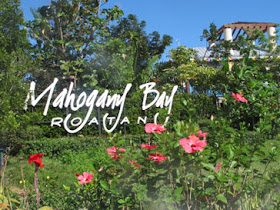 |
| Beautiful beach at Mahogany Bay, Roatan |
During our mid-winter cruise from Galveston on the Crown Princess,
we looked forward to sampling this new-to-us port. We chose to snorkel there
and weren’t disappointed. Roatan is surrounded by a barrier reef that lies
approximately 300 feet from the shoreline. More than 130 accessible dive sites
make the island a diver’s or snorkeler’s paradise. An underwater museum of
sunken treasures, shipwrecks, and Mayan artifacts offers additional spots to
scout for fish.
 |
| Magic Flying Beach Chairs go to Mahogony Bay |
In many places the reef crest is very shallow, just a foot
underwater, but our excursion went to deeper water which allowed for extended
exploration around a variety of coral species. A school of small blue fish swam
by as well as many individual fish. This was my first opportunity to try out a new
waterproof camera case, and I was relieved that it worked very well. After snorkeling
in the warm water (temperature varies from 78 to 84 degrees), lunch was served:
roasted chicken, pasta, cabbage salad, rice—and rum punch, of course.
 |
| A world of underwater surprises |
The largest of the Bay Islands, Roatan is 37 miles long and less than five miles wide at its broadest point. English is the main language, which is another selling point for visiting Roatan.
A colorful history full of pirates, Indians, English settlers,
descendants of African slaves, and Spanish conquerors makes for a very diverse population.
Treasure hunters still come looking for bounty stashed on the island by more
than 5,000 pirates during the 16th and 17th centuries.
 |
| Larry has this snorkeling thing down pat. |
Modern seaside villages dot the shoreline. Tropical oak and
evergreen palms grow in abundance, and you'll have many photography opportunities when scouting various indigenous
flora and fauna along jungle trails in the 30 acres at Carambola Botanical Gardens.
Mangrove forests protect the coastal areas and support diverse marine life.
Local
vendors sell colorful handicrafts, and I couldn’t resist buying a beautiful ice
bucket and trivet, both constructed of a dozen different kinds of wood found on
the island. Useful items like these are the best remembrances of a fun trip.
Photos by Larry and Beverly Burmeier
Read more travel articles at Striped Pot and Austin Adventure Travel

No comments:
Post a Comment